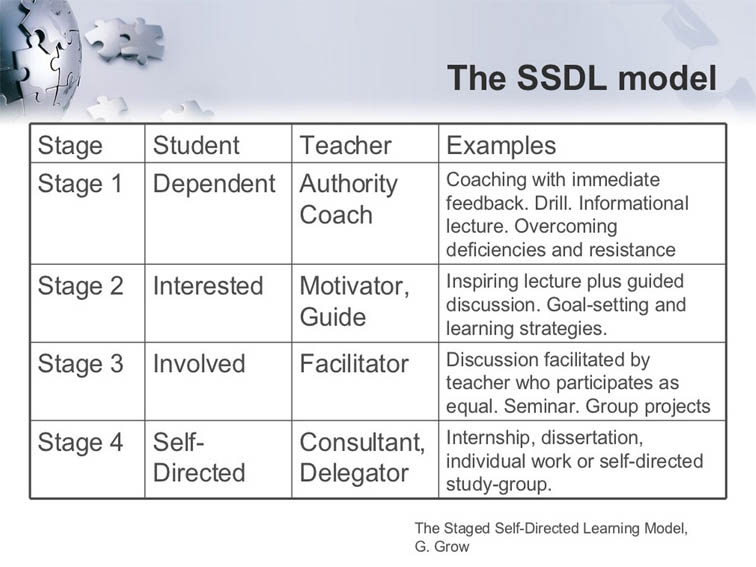by TeachThought Staff
Self-Directed Learning is not a new concept, but it’s often misunderstood—especially in the context of K-12 classrooms.
In a prior reflection, Terry Heick explored the relationship between self-directed learning and the true purpose of education:
“The goal of the model isn’t content knowledge (though it should produce that), but rather something closer to wisdom—learning how to learn, understanding what’s worth understanding, and perhaps most importantly, analyzing the purpose of learning (e.g., personal and social change). It also encourages the students to examine the relationship between study and work—an authentic ‘need to know’ with important abstractions like citizenship and legacy.”
Self-directed learning is gaining traction as educators look to modernize instructional practices. As dissatisfaction with traditional schooling grows, and with the wealth of online resources available in the age of information, it’s a powerful framework to help learners thrive independently. This model, popularized by Gerald Grow, breaks the journey into four stages of self-directed learning—closely mirroring the gradual release of responsibility teachers already know well.

Stage 1: Dependent (Teacher as Authority and Coach)
At this stage, students rely almost entirely on teachers to introduce knowledge, provide structure, and guide their learning. They lack the confidence and skills to learn independently.
- Teacher’s Role: Act as a coach and authority, offering clear instructions and immediate feedback to build foundational skills.
- Practical Strategies:
- Introduce students to new ideas via direct instruction, guided practice, and scaffolding.
- Use adaptive platforms like Khan Academy for structured, skill-building exercises.
- Create safe opportunities for students to take small risks without fear of failure.
Stage 2: Interested (Teacher as Motivator and Guide)
Students begin to demonstrate curiosity and start taking initiative but still rely on the teacher for structure and encouragement.
- Teacher’s Role: Motivate and guide students, fostering engagement through connections to real-world experiences.
- Practical Strategies:
- Use real-world, project-based learning to make content meaningful and inspire inquiry.
- Gamify lessons with tools like Classcraft or Quizizz to sustain engagement.
- Include lessons about goal-setting and self-management, helping students explore their own interests within structured parameters.
Stage 3: Involved (Teacher as Facilitator)
Here, students take an active role in their own learning. They can set goals, collaborate with peers, and manage tasks with minimal supervision.
- Teacher’s Role: Facilitate by being a guide on the side, promoting student-led activities while offering support when needed.
- Practical Strategies:
- Encourage student-driven collaboration through group projects or seminar-style discussions. Use tools like Google Workspace to support teamwork.
- Introduce inquiry-based learning, fostering critical thinking as students use research to ask and answer their own questions.
- Provide students with choice menus or flexible frameworks for projects, giving them autonomy while maintaining boundaries.
Stage 4: Self-Directed (Teacher as Consultant and Delegator)
Students now take full responsibility for their learning, independently setting goals, tracking progress, and seeking resources. Teachers shift into a consulting role, offering feedback and support only as requested.
- Teacher’s Role: Act as a consultant or delegator, stepping aside to let students take ownership.
- Practical Strategies:
- Assign passion projects or independent research tasks to encourage autonomy.
- Use tools like Notion or reflective learning journals for tracking goals and progress.
- Incorporate peer-network accountability, where students share goals and provide feedback to each other.
The Purpose of Self-Directed Learning
The ultimate aim of self-directed learning isn’t just mastering content but achieving something closer to wisdom—learning how to learn and understanding why learning matters. This model encourages students to explore the relationship between studying and real-world applications like work, citizenship, and personal growth.
With effective guidance through these four stages, self-directed learners uncover their need to know and build skills that transcend the classroom. It’s not just about knowledge—it’s about preparing students to adapt, grow, and innovate in a constantly changing world.
Additional Resources:
The Four Stages Of The Self-Directed Learning Model
Learner Teacher
Stage 1 Dependent Authority, Coach
Examples: Coaching with immediate feedback. Drill. Informational lecture. Overcoming deficiencies and resistance.
Stage 2: Interested Motivator, Guide
Examples: Inspiring lecture plus guided discussion. Goal-setting and learning strategies.
Stage 3: Involved Facilitator
Examples: Discussion faciliated by the teacher who participates as equal. Seminar. Group projects.
Stage 4: Self-Directed Consultant, Delegator
Examples: Internship, dissertation, individual work or self-directed study group.
Theories of Teaching and Learning: The Staged Self-Directed Learning Model, G.Grow. from Barbara Stokes; Four Stages Of A Self-Directed Learning Model
TeachThought Staff 2025-03-26 23:35:00
Source link

